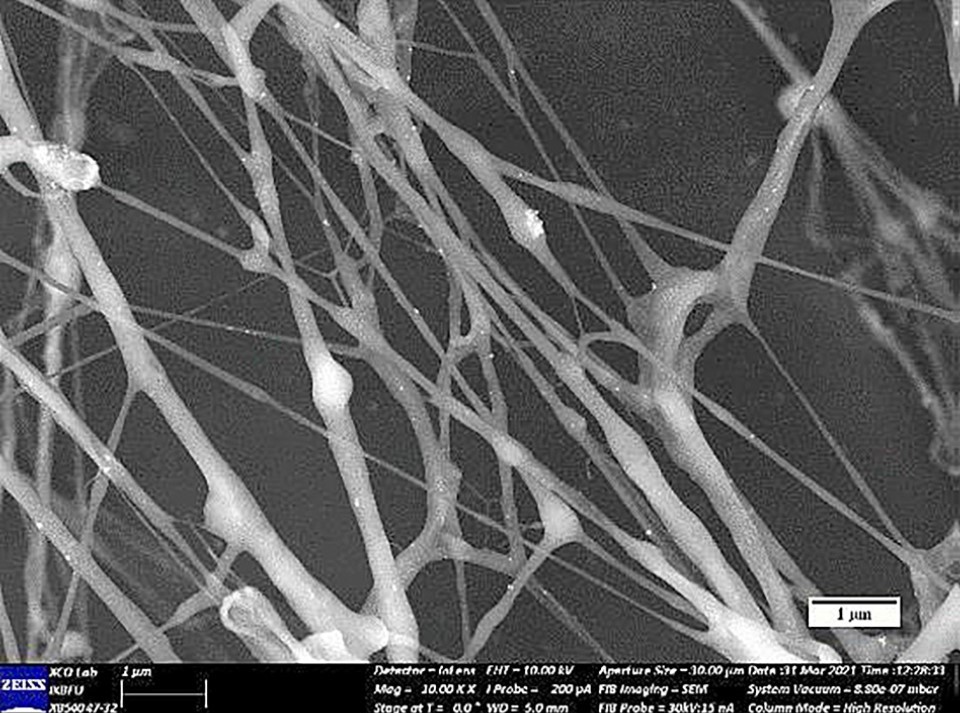Scientists at BFU named after Kant Immanuel have synthesized copper- and silver-based microparticles, stabilized with apple pectin. Experiments have shown that such particles effectively bind organic sulfur-containing compounds. Since substances containing sulphur atoms are present in the composition of oil and lead to metal corrosion, the development will help prevent pipelines and other equipment in contact with oil from premature destruction. The results are published in Journal of Ecological Engineering.
Oil pipelines carrying crude and other metal equipment in direct contact with oil are subject to corrosion. The destruction of metal occurs due to the fact that besides hydrocarbons, the composition of crude oil includes reactive sulfur-containing compounds such as thiols and thioethers. They oxidize metals, forming sulfides, resulting in the reduction of pipelines’ and other equipment’s strength. That’s why scientists are looking for effective ways of protecting metal from corrosion caused by sulphur compounds.
Researchers at Baltic Federal University of Immanuel Kant (Kaliningrad) with their colleagues at Serikbayev East Kazakhstan State Technical University (Kazakhstan) have decided that bimetallic (consisting of two metals) microparticles based on copper and silver can be used for protecting oil pipelines. According to the proposed approach, the solution of microparticles should be applied onto the metal surface that is in contact with crude. The copper and silver in the microparticles interact well with sulphur, that’s why they will draw compounds leading to corrosion towards them, thereby protecting oil pipelines and equipment from them.
The authors have obtained micro-sized bimetallic particles by covering the surface of silver nanoparticles with copper. Then the obtained structures were placed in a solution of apple pectin — a kind of fiber that in the natural world provides the firmness of the fruit, and helps sustain its stability in the case of the microparticles solution.
To check whether the bimetallic particles are able to attract sulphur-containing substances, the authors mixed them with a sulfur-containing amino acids cysteine solution. The original and resulting mix were analyzed using methods of molecular spectroscopy that allow to determine how did the structure of molecules and chemical bonds between them change. The study found that cysteine does deposit on the surface of microparticles, largely due interaction between atoms of sulphur and silver.
«Our experiments have shown that the suggested bimetallic microparticles may serve as an environmentally-friendly method of protecting metals from corrosion. In the future we are planning to conduct the experiment in real-world conditions: to apply a layer of microparticles onto the surface of a pipeline’s body and replicate the conditions for oil transportation. We assume that the durability of such coatings will be commensurate with the lifespan of the transporting pipes themselves» — says Elena Van, Candidate of Technical Sciences, Associate Professor of Institute of medicine and life sciences at BFU named after Kant Immanuel.
